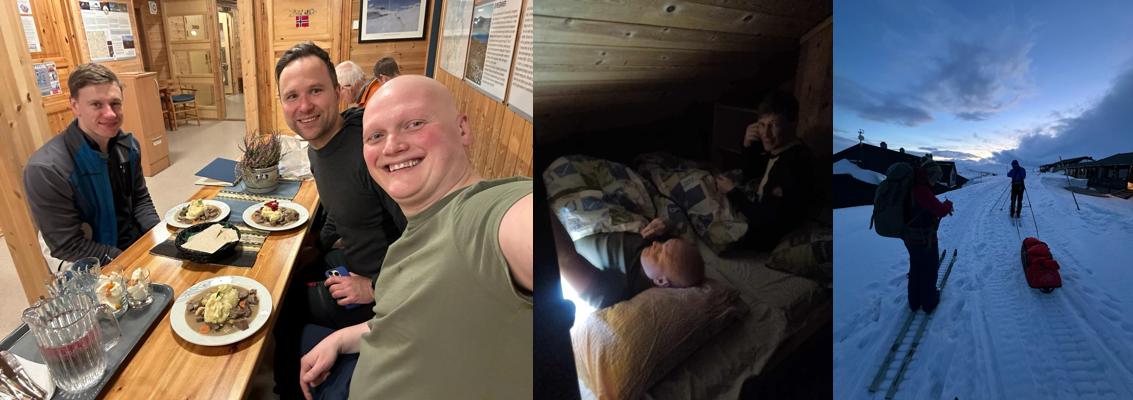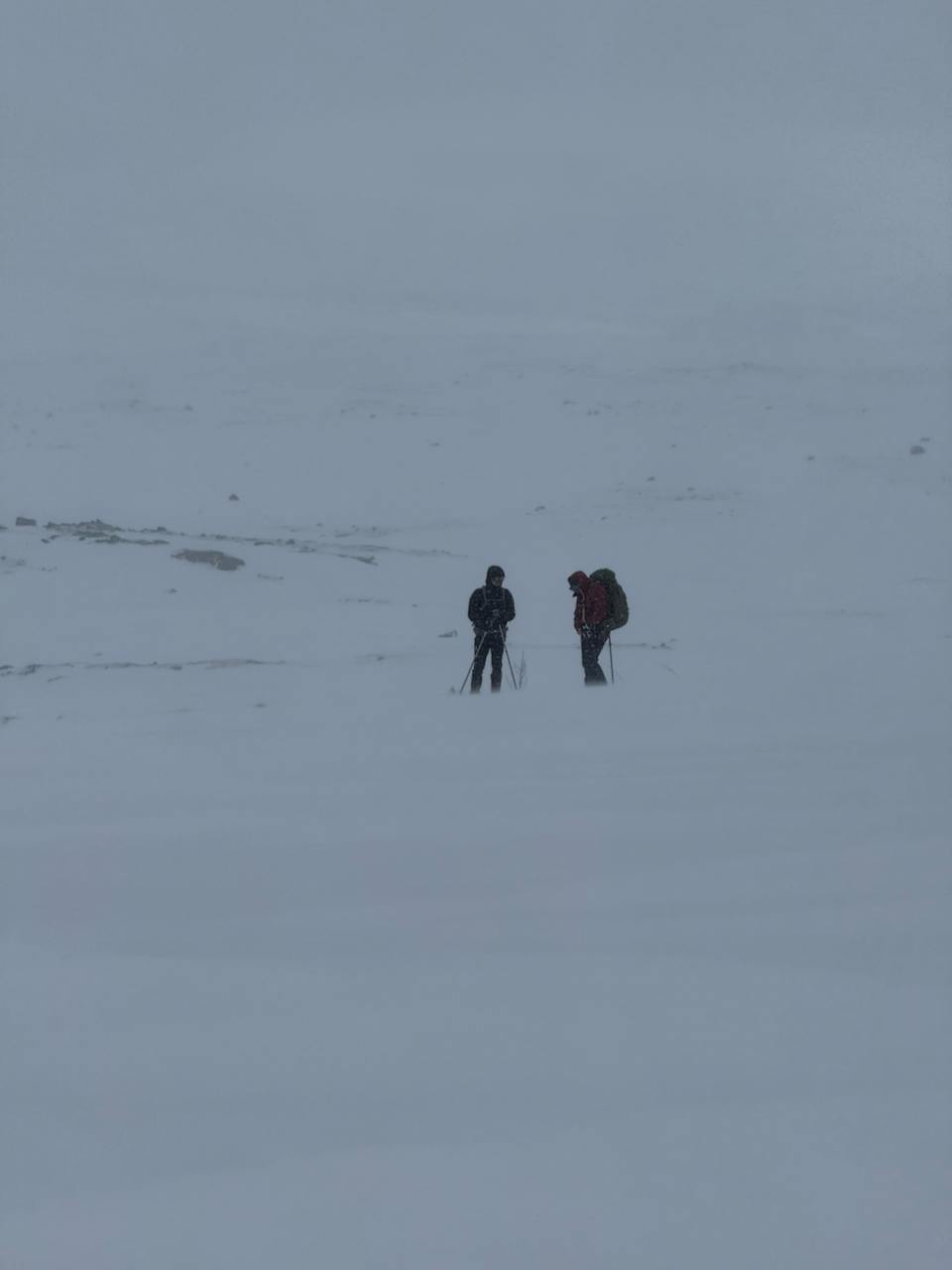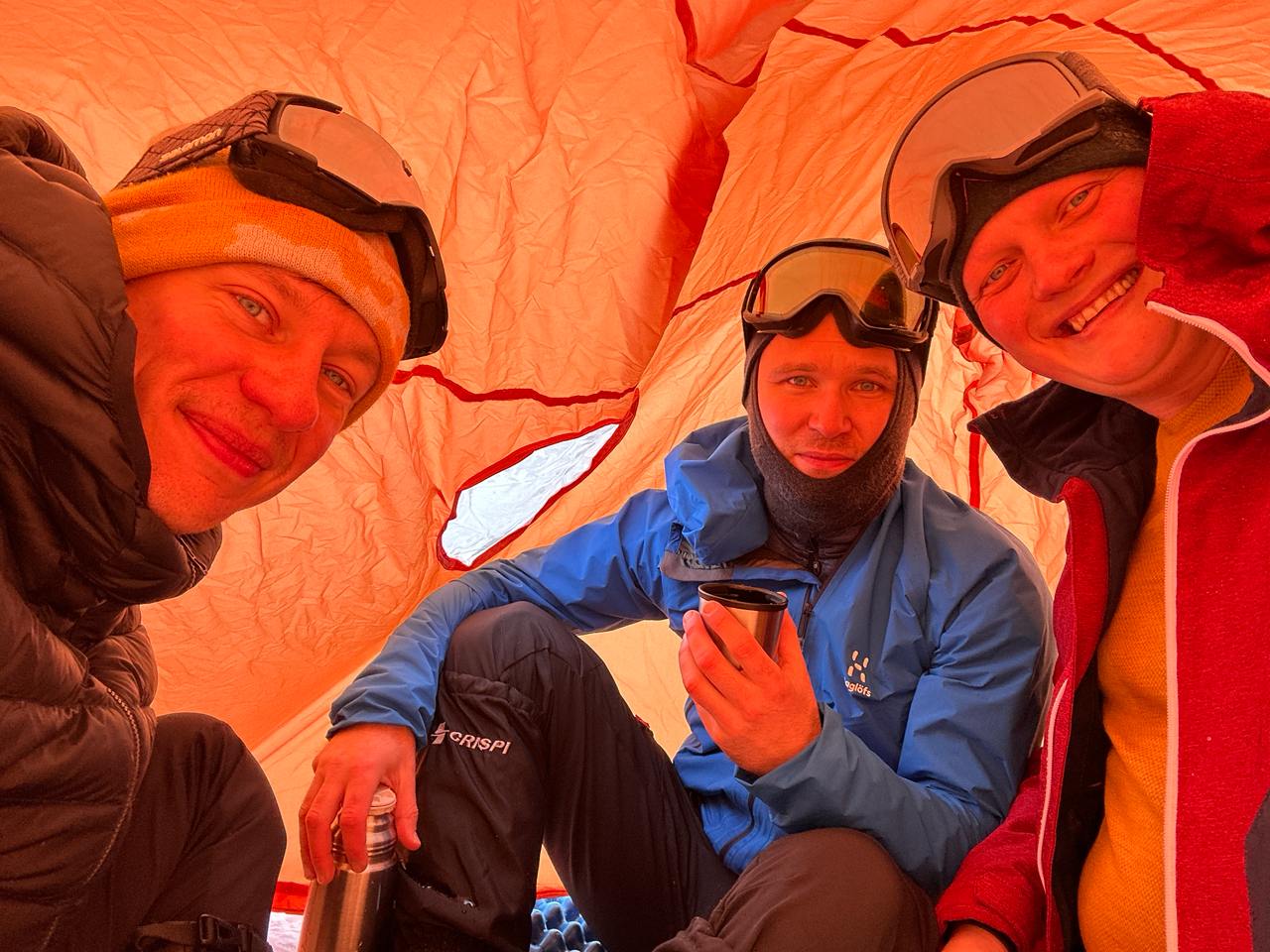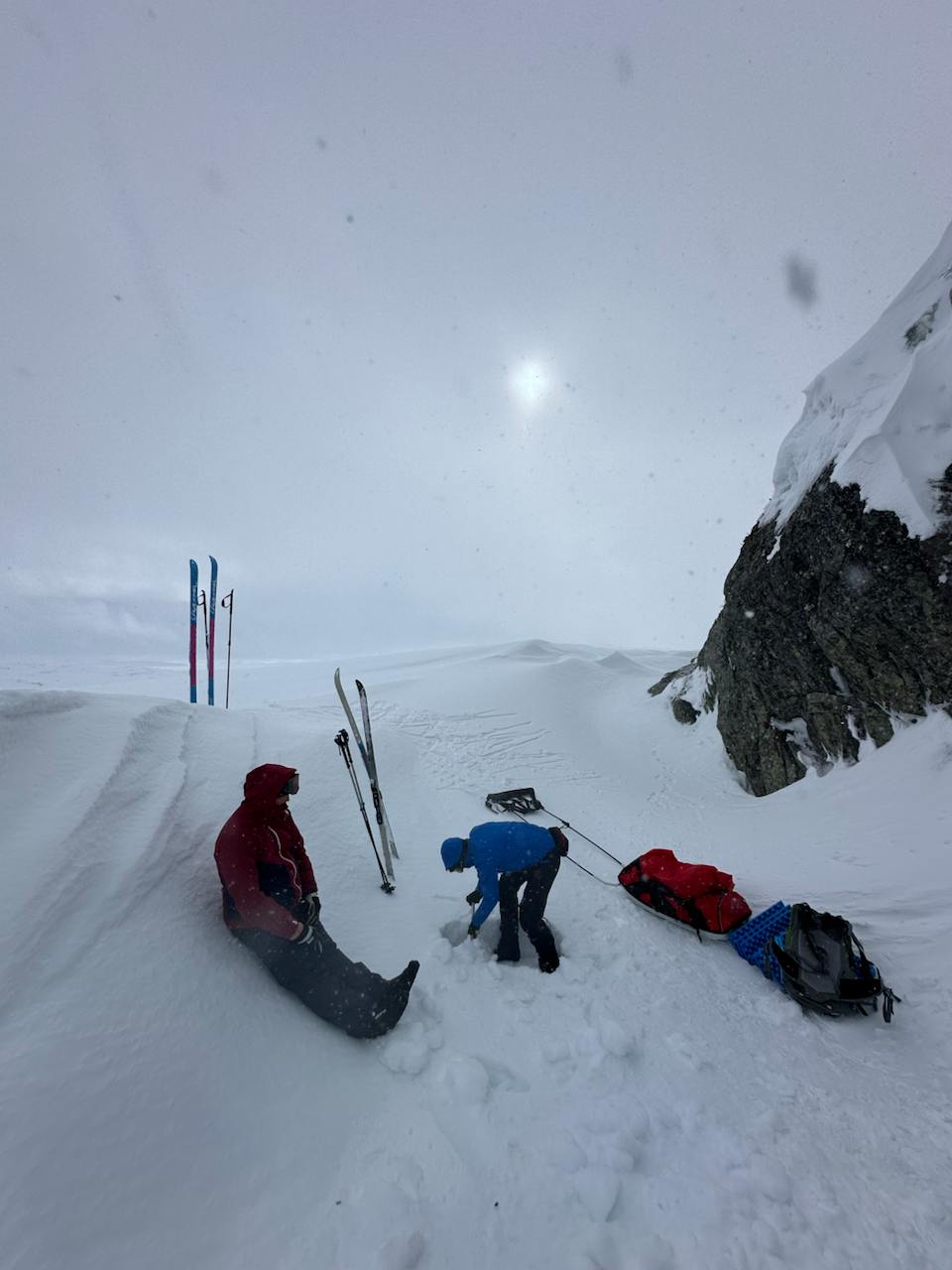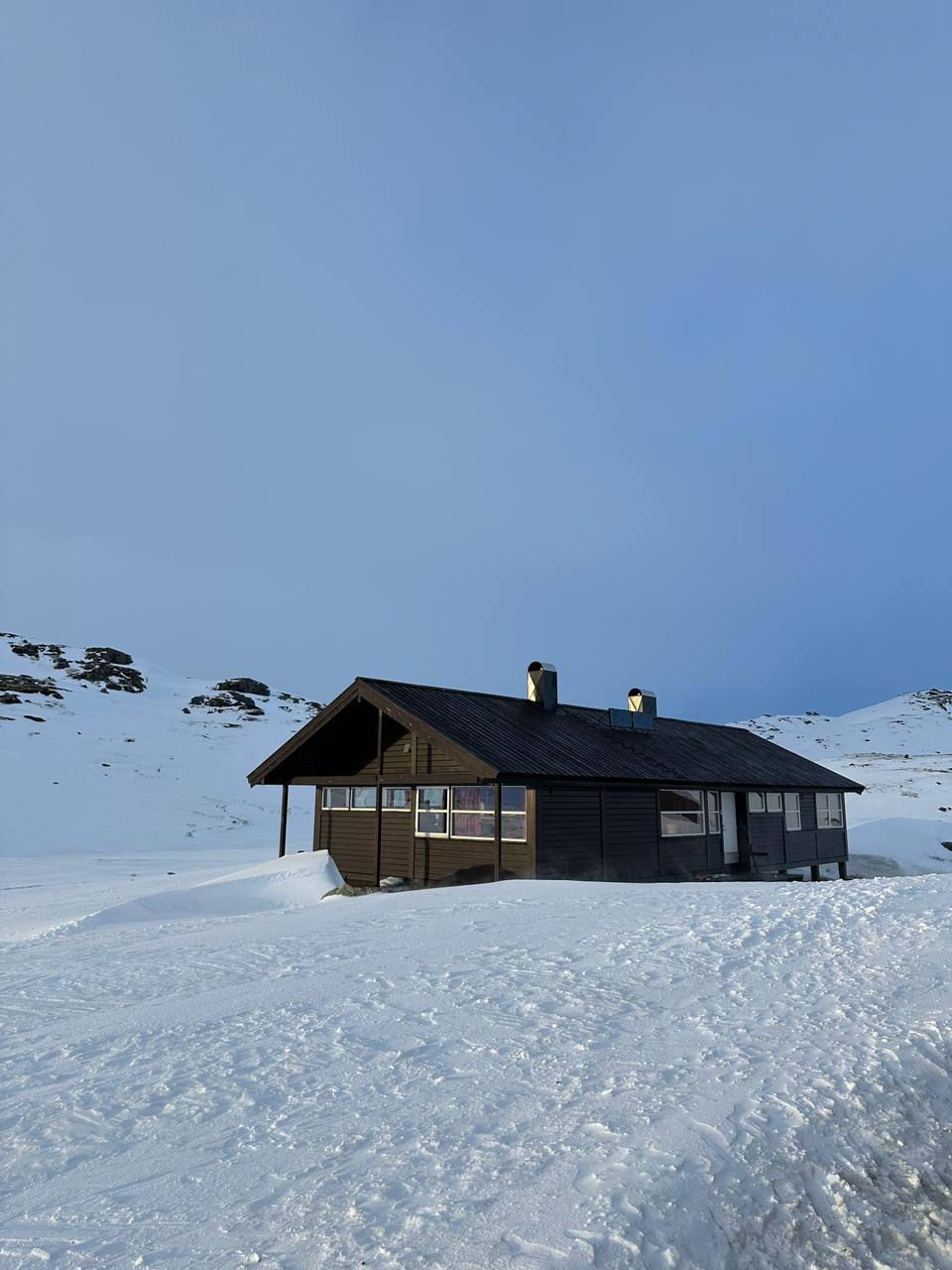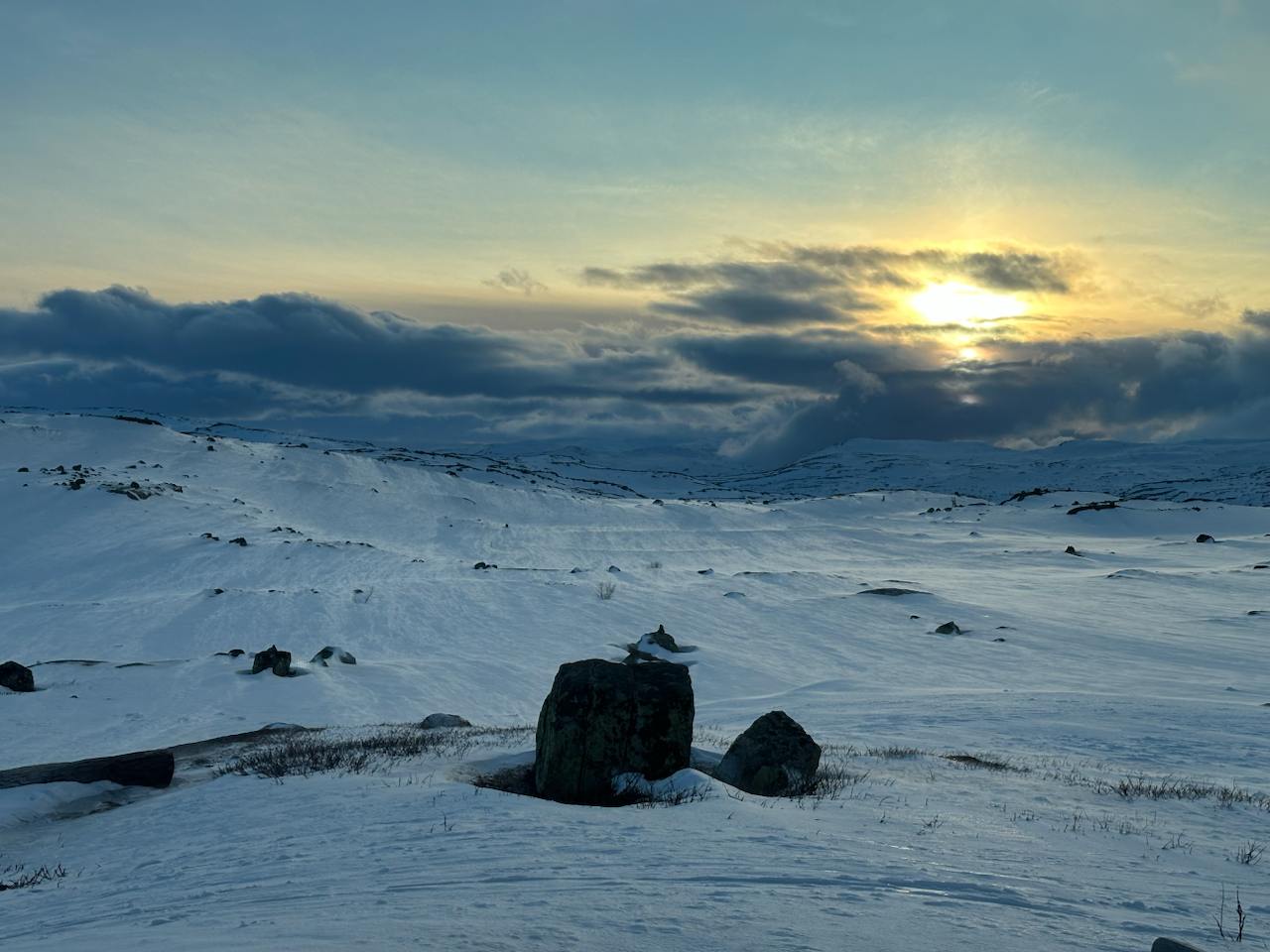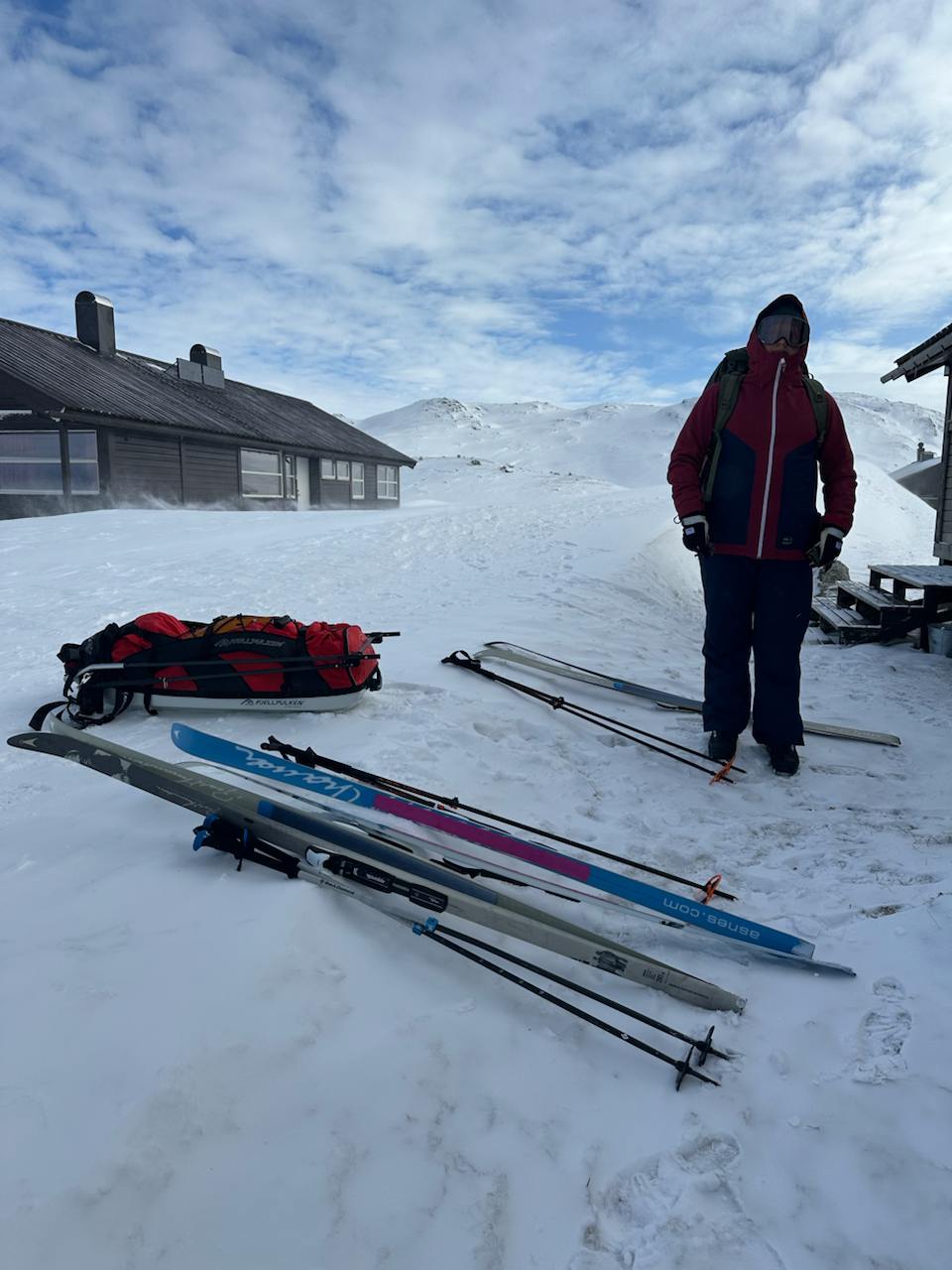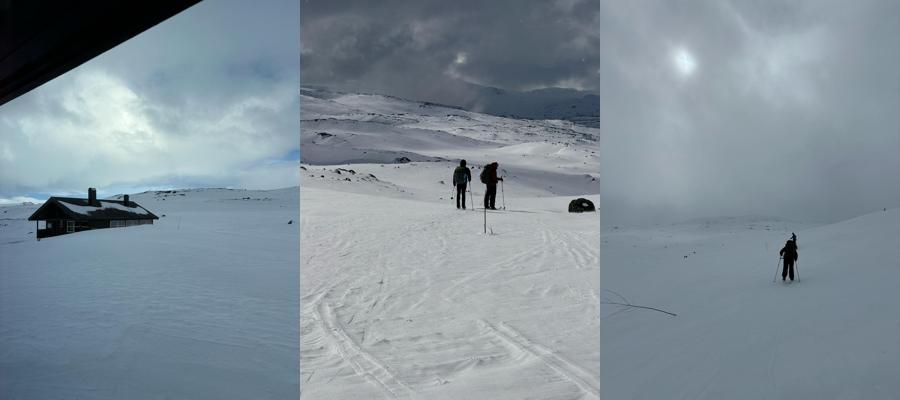Hardangervidda - Ski Expedition (March 2025)
Three days winter adventure into national park Hardangervidda
📌 TL;DR
- Route: Halne Fjellstugu - Krækkja - Kjeldebu - Dyranut
- Type: ski expedition on fjellski with three stages
- Team: Paul, Nikolai, Nikita
Introduction: Planning
My friends and I — a small squad of four (though not everyone can always join) — are building a nice tradition: at least once each winter, we go on a ski expedition with an overnight stay.
This year, everything lined up just right: there was a sale at XXL, we bought fjellski, and decided it was a sign — time to go.
The idea of going to Hardangervidda came up early in the season, but the real planning didn’t start until just a week before the trip.
The two key factors: weather and snow levels in the mountains.
🗺️ Day 1: Night, Wind, and Skis (Halne Fjellstugu - Krækkja)
The three of us left Oslo by car on Thursday and drove toward Halne Fjellstugu.
Roughly 260 km, around 4 hours on the road plus stops for fuel and snacks. We paid for parking — 220 NOK for two days (110 NOK per day), put on our skis, and hit the trail toward Krækkja — already at 19:30, in complete darkness.
Night. Wind. Snow. And happy faces. Navigating in the dark is a challenge on its own. We were saved by the route markers — kvistede løyper — thin sticks sticking out of the snow. These are seasonal, so it’s important to check in advance whether your route is marked.
The first stretch was short — just 5.5 km — but in the dark and with that weather, it felt like a real adventure.
Along the way there were a few small downhills, some tents with other travelers, and even 5G signal at times.
After about an hour and a half, we arrived at Krækkja — a serviced DNT cabin (betjent hytte) where you can eat, take a shower, and stay overnight. Dinner and breakfast are included.
We slept in a shared room with 16 people. Shoutout to wax earplugs — they saved my sleep.
🌨️ Day 2: Long Trek and Gear Testing (Krækkja - Kjeldebu)
Day two brought us the longest trek of the trip — about 13 km.
We had to gain around 350 meters in elevation. Not scary, but the strong morning wind made it feel more serious.
The weather shifted every few hours — sunny, then cloudy, then back to gusty winds. Nothing to worry about.
First Break — and First Gear Test
Paul decided to test out our 4-person shelter — a fun little thing to hide from the weather. No wind inside, warm enough to eat, and a great way to take a real break. Definitely useful.
That day, I really started to feel like we were off the grid. We met three groups on the way. One of them stopped to chat — we exchanged thoughts on visibility, forecasts, and general route info. Lots of foreigners.
The general rule is simple:
See a person in the mountains — go talk to them. It’s always worth it.
The scenery was fantastic: a white desert, biting wind, no trees in sight. Just you, your skis, and the horizon.
We were on the move for about 5 hours, of which 3.5 were active skiing. The pace was easy, to conserve energy. Unfortunately, everyone’s boots started rubbing badly. We were semi-prepared — with plasters and the knowledge this was common — but still, the damage was done. Our first-aid kit got a workout.
🛖 Reaching Kjeldebu
We made it before sunset. Kjeldebu is an unstaffed cabin (ubetjent hytte) — super basic but peaceful. Outhouse, wood stove, bunks, and some light from solar panels. No outlets (thankfully we had powerbanks).
It felt like a mini version of living outside. By day two, I had stopped noticing the smell of my clothes.
Not showering for 2–4 days — it’s just part of the expedition 😄
We melted snow on the stove, boiled it on the gas burner, ate, wandered around, and chatted with the few other guests.
The evening was spent around the stove — warm, cozy, and full of good vibes.
I slept in thermal underwear and a hat, in a room built for nine people. We stayed up late discussing our route for the next day… and decided to make the final call in the morning.
☀️ Day 3: New Trails and a Lucky Ride (Kjeldebu - Dyranut)
The morning started with a discussion about the route… and a bit of a bravery contest.
In the end, we decided to go toward Dyranut for two simple reasons:
- the route was shorter
- the route was new and unexplored for us
Almost immediately after setting out, we went off trail. It happens. We’re experienced enough to just keep going. The weather was great, the views were amazing, and the vibes — absolutely top-notch.
🚗 Hitchhiking — Grandpa to the Rescue
Once we reached Dyranut, one question remained:
How do we get back to the car we left at the starting point?
One of us headed to the road and… hitched a ride. Normally, a taxi or private transfer costs about 600 NOK (for a 15–20 minute drive), but we got lucky — a super friendly grandpa gave a free lift all the way to the parking lot. Half an hour later, our car rolled up, and we packed up and hit the road back to Oslo.
🎒Gear
Pulk — the best cargo-carrying-thing when it comes to carrying heavy stuff. Downhill, it handles like a drunk Labrador.
But for multi-day winter trips? Absolutely essential. We dumped all the heavy gear in there, and our backs were grateful.
🧰 Must-haves:
- First aid kit: lots of plasters (next time I’m bringing tape), paracetamol, Vaseline (for windburn and chafing), sunscreen (SPF 50)
- Thermal base layers — at least one set (two is okay, but honestly, by day two you don’t notice the smell)
- Fjellski — wider than classic skis, with skin attachments
- BC ski boots — our biggest pain point. Even with plasters, everyone got blisters
- Skins — synthetic strips that glide one way and grip the other. A lifesaver for climbs
- Poles for deep snow
- Indoor slippers — you can’t wear boots inside the huts. Floors are cold (sometimes wet)
- Ski goggles — for wind and snow protection
- Windproof jacket with hood — an absolute must. Snow finds its way into everything
- Backpack with hip support
- Warm clothes and a towel
- Thermos with hot water or tea
- Power bank — especially important at unstaffed huts
- Bedding or a DNT sleeping liner
- Knife or multitool — ideally with a can opener and tiny spoon :)
🍲 Food
Everyone does it differently. I packed bread and canned food for dinner and lunch, and fueled up during the day with Snickers and sandwiches. Sometimes Turmat — freeze-dried meals with eternal shelf life and minimal effort.
🤷♂️ What I could’ve skipped:
- Second set of thermal layers
- Second pair of underwear (you get used to the smell pretty quick)
- Second thermos
- GoPro — battery died in the cold. Didn’t record a thing
- 3–4 extra pairs of socks (though… warm wool socks are always a joy)
💸 Costs (in NOK)
Prices shown without DNT membership discounts:
- Transport (gas + tolls): 730 / 3 = ~ 245
- Parking: 220 / 3 = ~ 75
- Stay at Krækkja (with dinner & breakfast): 3840 / 3 = 1280
- Stay at Kjeldebu: 1500 / 3 = 500
- Personal food: ~300
Total for me: ~2400 NOK

